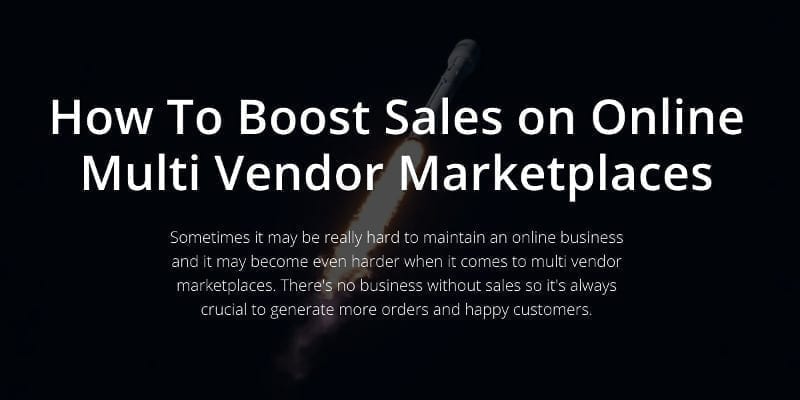How To Boost Sales on Online Multi Vendor Marketplaces
So what are the three pillars of a marketplace sales growth? They are driving traffic to the multi vendor ecommerce mall, converting it into orders and making the post-purchase experience great to bring shoppers back.
Let’s take a closer look at the tips that may help to increase sales of your multi-seller shopping mall business.
You may also be interested:
multi vendor marketplace software
1. Generate More Traffic
1.1 SEO
This is the most obvious thing you can do to have higher ranks in search engines. The point is—you should focus on making it easier for shoppers to look for goods or services you offer on the eCommerce shopping mall website instead of self-promotion to potential customers.
And this is when it becomes tricky. In case of internet shopping mall platforms, these are online vendors who are responsible for most of the SEO work. That’s why it’s necessary to educate your vendors and let them know the best practices on how to get visible.
The Etsy Internet multi vendor marketplace has an ample Seller Handbook covering lots of different topics including how to get found:
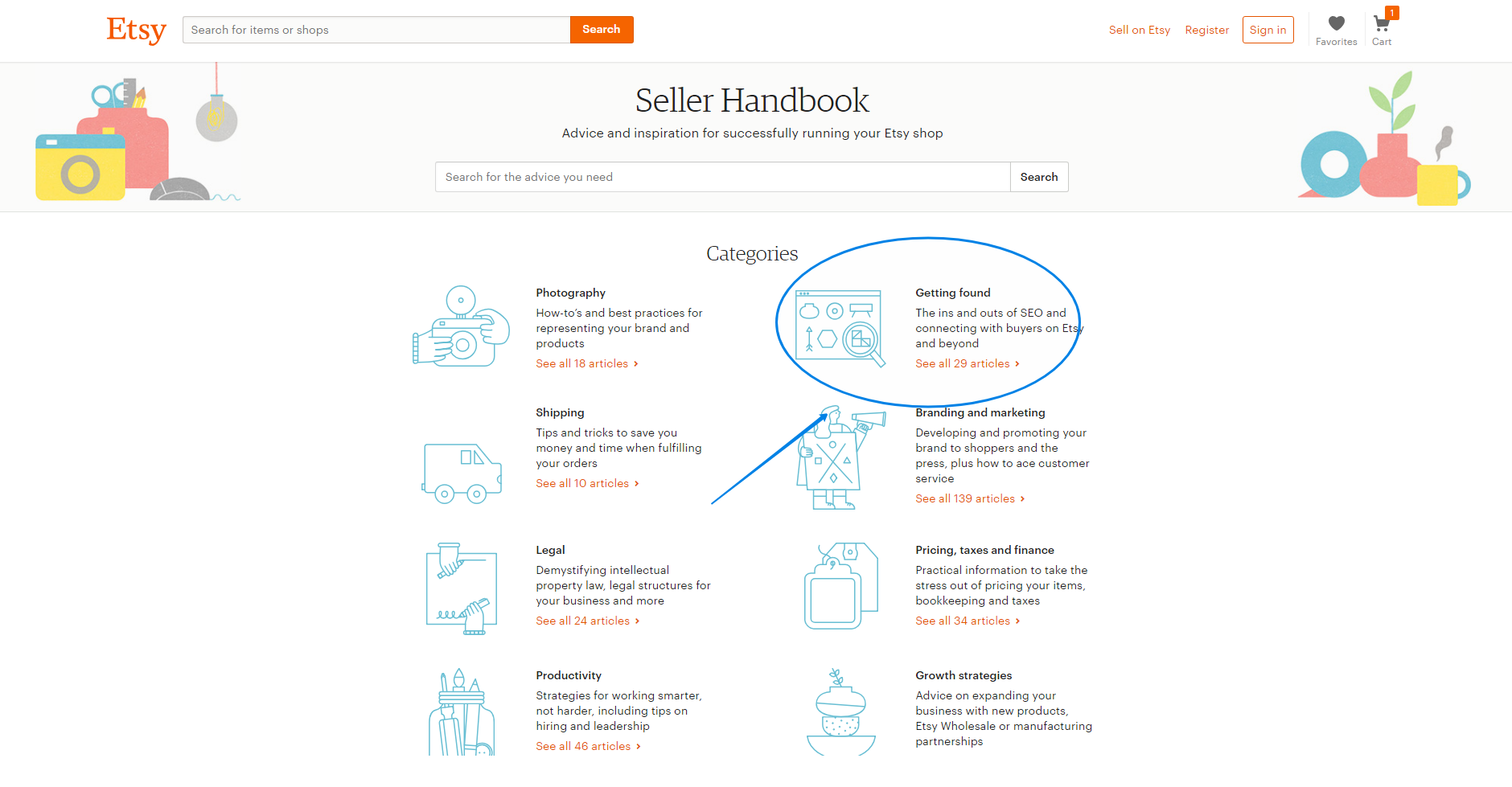
1.2 Content Marketing
Probably you have already heard a lot about content marketing’s importance. The truth is the best prices and ads are good but not enough nowadays. This is why you should start blogging:
- it improves your positions in search engine results
- engaging content is shared and may become viral
- sellers oriented content may bring new vendors and improve their offerings (remember Etsy?)
Content marketing tools are not limited to blogging only. Think about making videos, writing guest posts (thus you’ll help your SEO with backlinks), starting a podcast, invite your virtual customers to a webinar or making downloadable pieces of content like detailed guides and tutorials. All these could be produced for shoppers as well as sellers.
Don’t forget to distribute your perfect content pieces through your social media channels and always encourage your employees to share a brand-related stuff on their personal accounts.
This is how ASOS does it. They regularly publish posts on shopping tips, beauty tutorials, look inspirations, celebrity styles and so on.
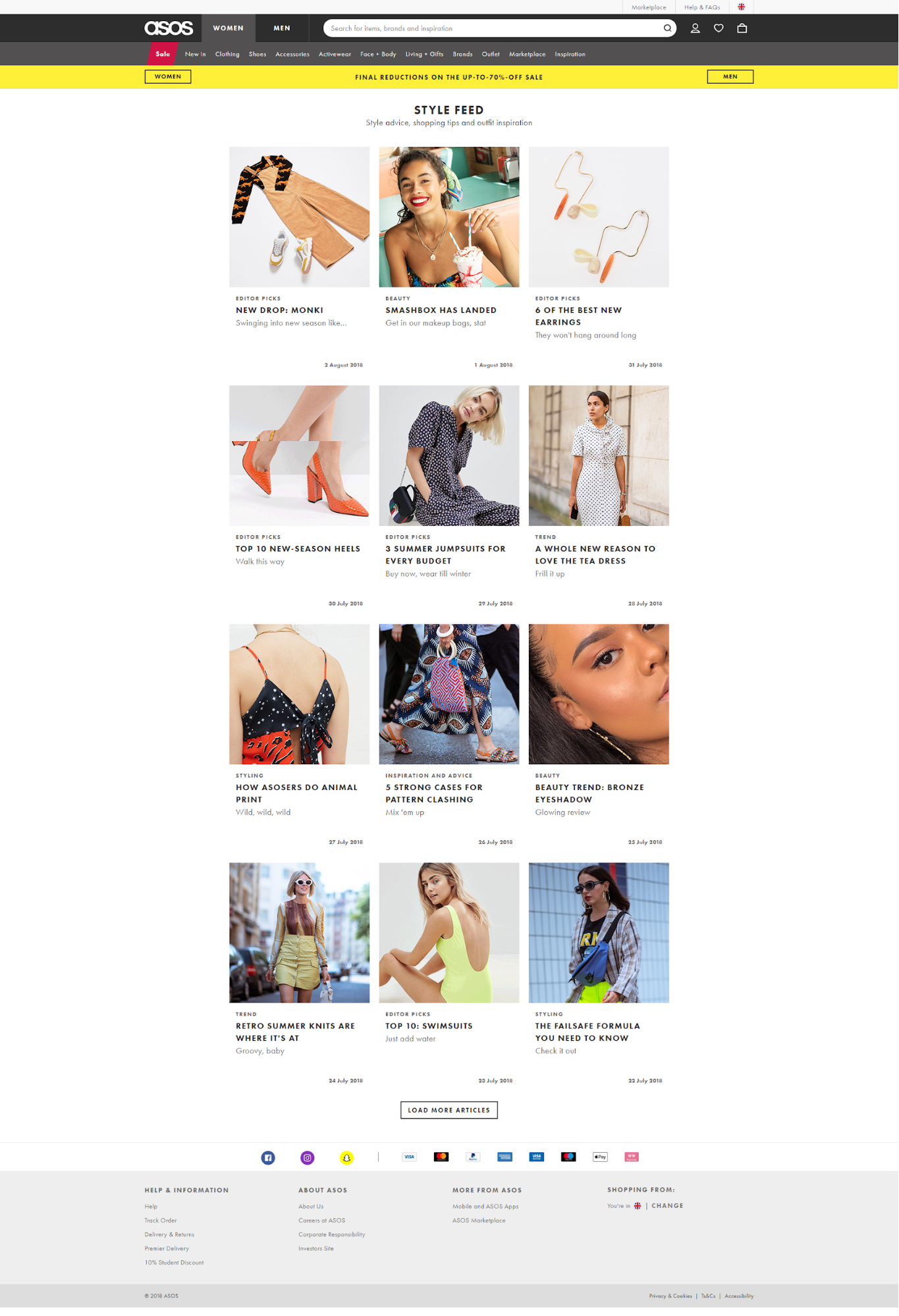
1.3 Sell More with Instagram and Facebook
Using social media is not about just having a brand Facebook page. Here are some tips that may help to bring more followers and potential buyers:
- Don’t forget to put the link to the virtual multi-store platform or necessary landing pages in your profiles and keep them fresh
- Come up with a simple and unique hashtag for your ecommerce marketplace
- Also, use unique hashtags for sales and special events
- Prepare and make posts related to trending and seasonal events (holidays, sport and cultural events, premiers, festivals)
- Regularly make contests
- Show behind the scene moments
- Moreover, you could always use paid promotion tools of each social network.
By the way, you could try to sell directly using Instagram shoppable posts and Facebook Shop.
Snapdeal makes unique hashtags for their sales.
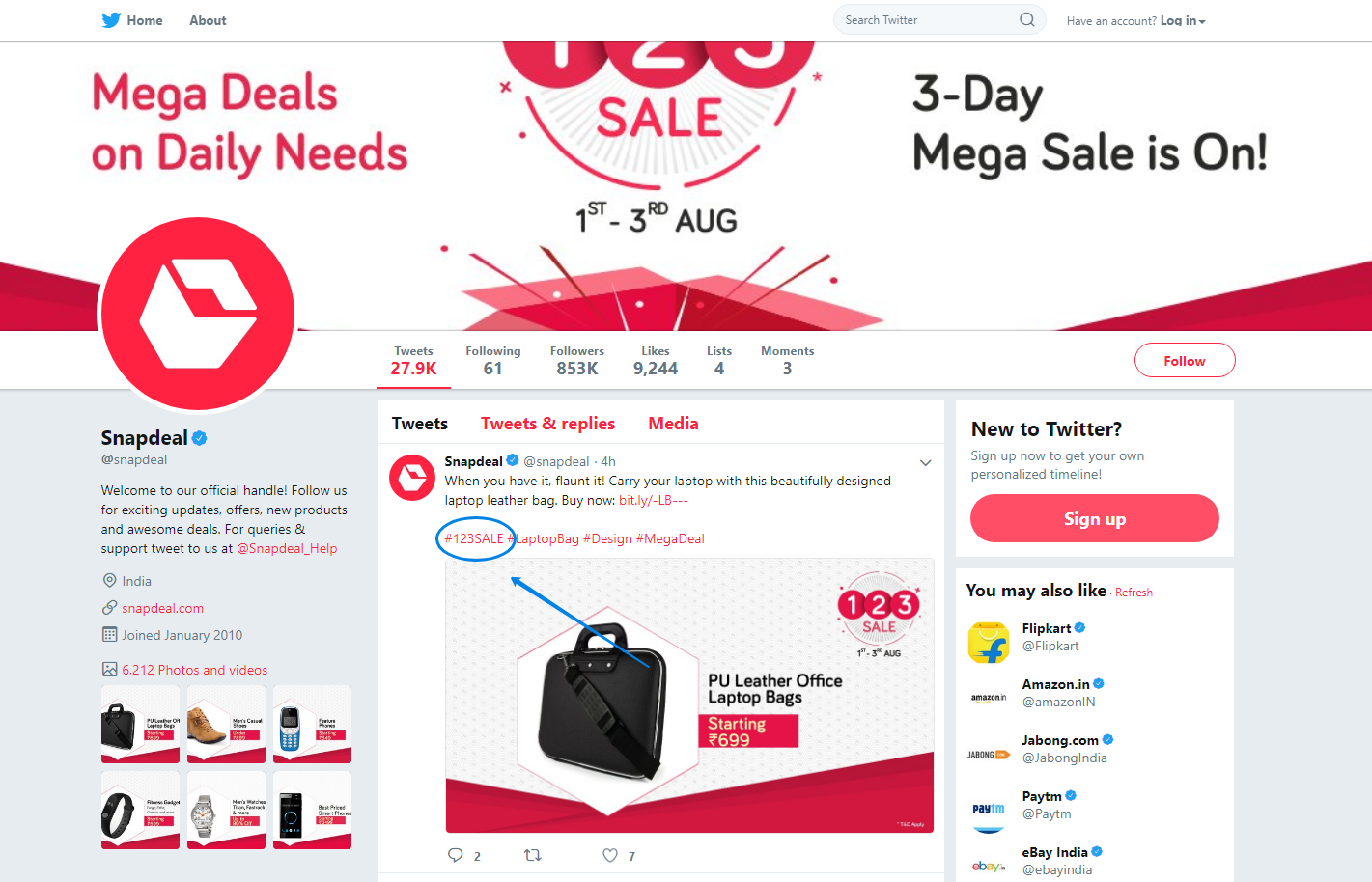
1.4 Influencers
Collaborating with influencers is super effective in generating sales. Finding the right person to work with is not always an easy task but it’s worth it. If you know what is your target audience it would be much easier. Choose someone who would be compelling for it.
While discussing the deal do not hesitate to ask the necessary statistics of the chosen virtual multi-store platform and check the influencer’s popularity yourself (for example with Social Blade). And bargain for a better price. Benefits from your Internet multi vendor marketplace may also work.
1.5 Public Groups and Discussion Boards
Facebook groups and sites such as Quora are the best places to wisely promoting your brand.
Find the right groups or niche forums and sites to answer questions, gain some trust from the community, give useful info in your comments and take part in discussions. As soon as you become credible you can start leading the audience to your online multi vendor marketplace platform. But remember—the usefulness of your answers comes first.
1.6 Go Offline
While selling online is why you’re reading this it’s still worth mentioning that offline channels can be just as valuable and bring some more online traffic. It also helps to increase brand awareness and move into a new market.
Well, how to use this opportunity?
- Check a calendar and find out what events or holidays are the most suitable for your business. Depending on your budget decide if you’re ready to organize it yourself or want to join some of the events another business is organizing. The best thing you can get from this partnership is a loyal brand following of your partner which can become yours as well.
- Take part in trade shows. Speaking with other sellers and learning from their experience would be a nice bonus.
- Pop-up shops can help you test new products or a new market. Although the location is a temporary thing, make sure your impression on customers is not.
Lots of ecommerce businesses choose to go offline from time to time. The multi-seller shopping mall giants like Amazon are no different.
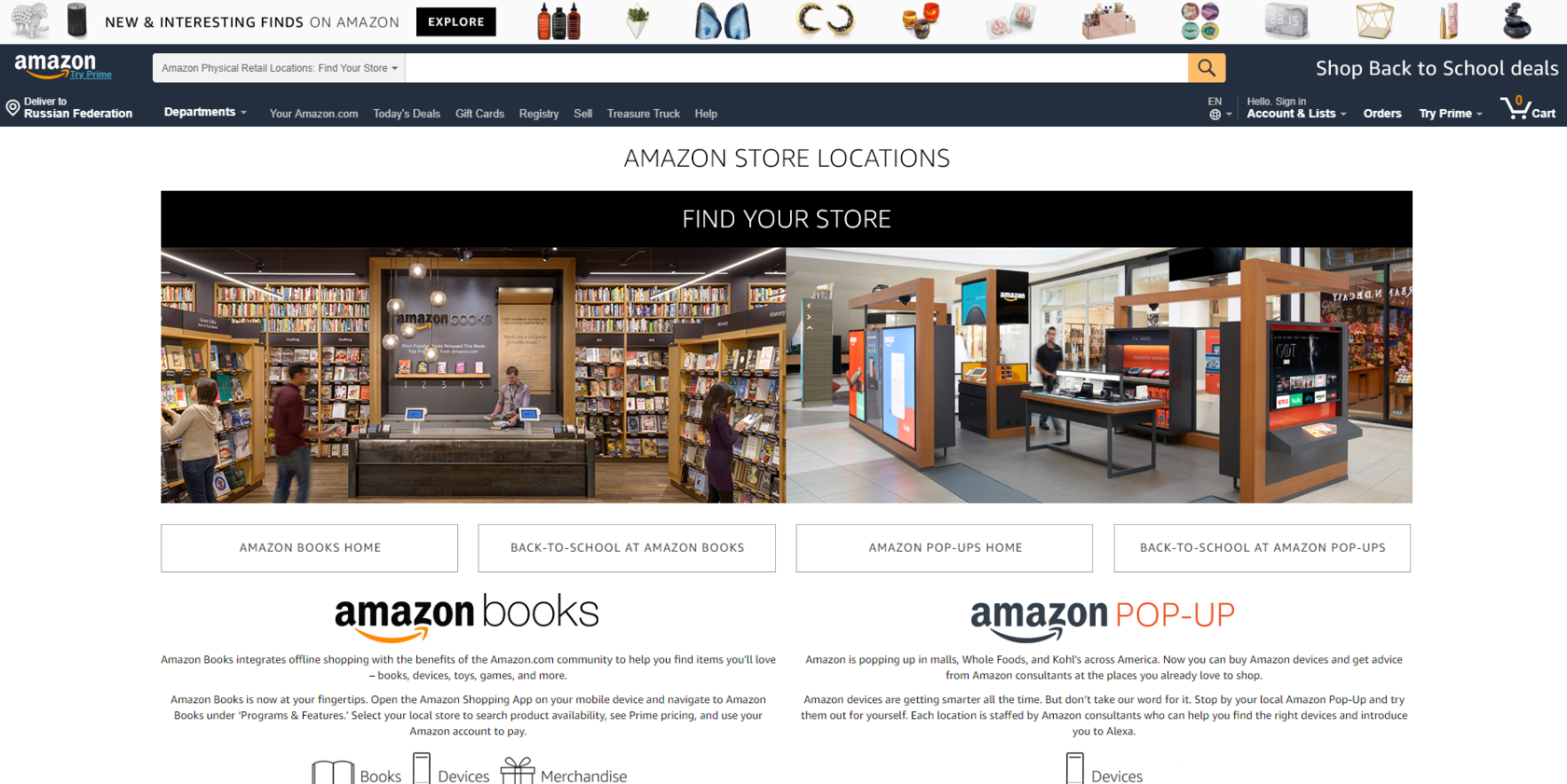
1.7 Be Local
Determine where are the biggest concentration of your online customers and offer a promotion for this location. After analyzing their behavior and products they buy plan seasonal and local events-oriented promotions. You can also consider making a pop-up shop out there.
If you have a warehouse or warehouses a good idea would be to offer free or discounted shipping for those nearby shoppers.
1.8 Referral Program
Giving reward points, gifts, or discounts for referring a friend is just what you need if you want to try word-of-mouth marketing. It brings like-minded people who might also be interested in your Internet multi vendor marketplace products. This method is scalable as your user base getting bigger the effect increases without any work from your side.
If you choose to implement this feature don’t forget to add an ability to share the referral link to social networks, this will help to expand sales and have more income.
1.9 Group Gift
Another cool feature that will help to attract more virtual shoppers is letting a user create a group inviting his friends to purchase a gift together. Thus every member will be able to make a donation.
1.10 Product Pins
Are the high-quality attractive product images the most critical in your online multi vendor marketplace platform? Then allowing your virtual vendors to add Pinterest pins will help to have more customers. Make sure the necessary product info is saved too (product price and description, stock availability, and so on).
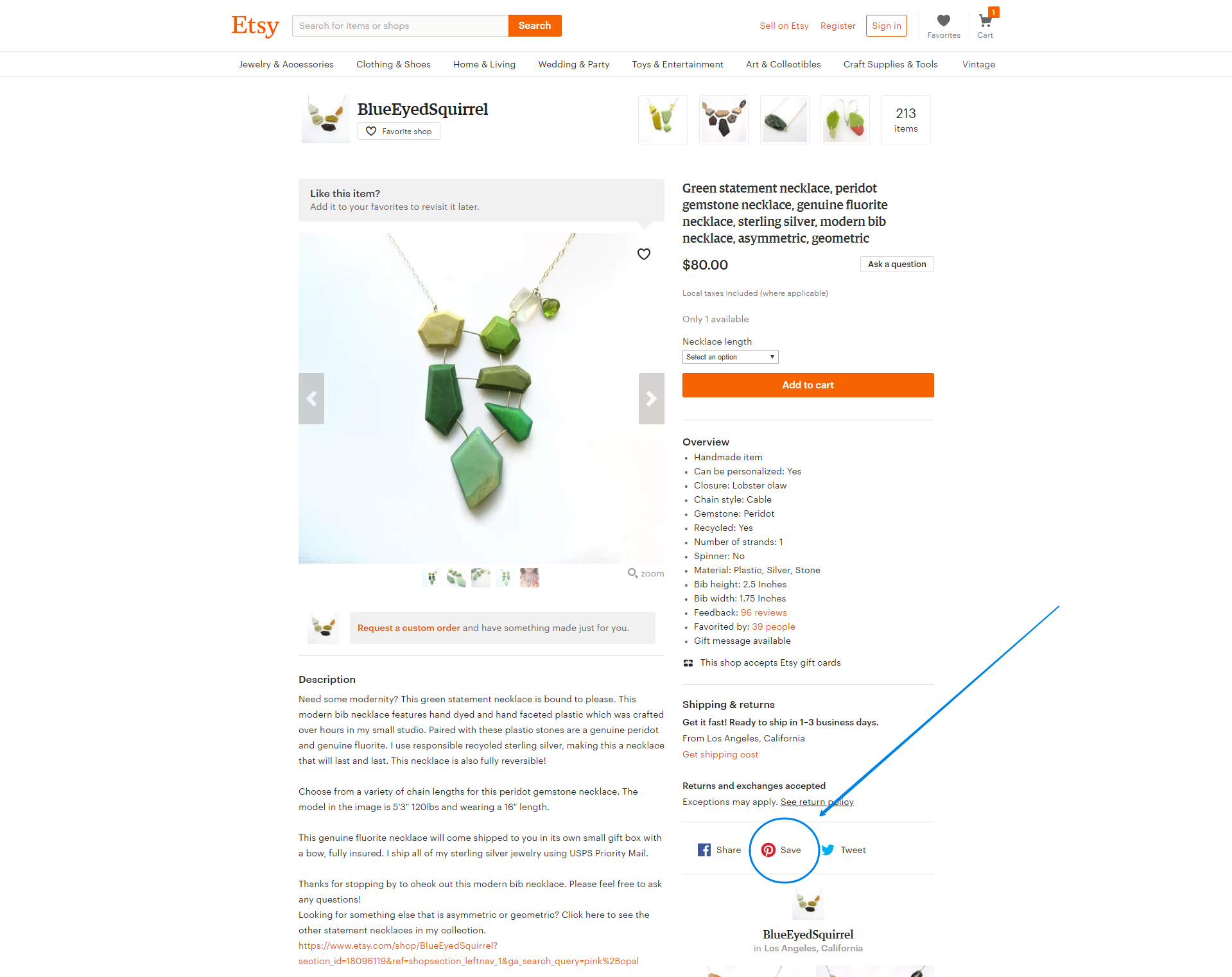
1.11 Exclusive “Online-Only” Products
In case some big vendors are represented in your multi vendor eCommerce mall it’s possible they may have long anticipated announced products coming. Don’t miss this chance and discuss with the vendor a possibility of offering the product online-only exclusively on your multi-seller shopping mall for some time.
A great example is Flipkart selling the first lot of Xiaomi Mi3 smartphones exclusively, they sold it out within 39 minutes.
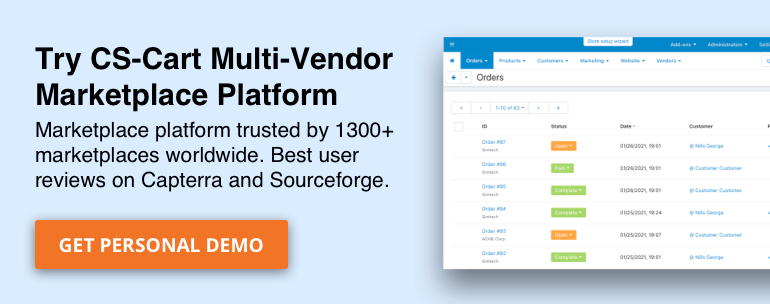
True Experience #1

Kelly Bedrich, the Co-founder of ElectricityPlans.com and President of Cypress Capital Ventures. He is an IT entrepreneur focused on acquiring, marketing, and improving e-commerce sites. His current emphasis is on taking ideas from startup to maturity with sustainable business benefits.
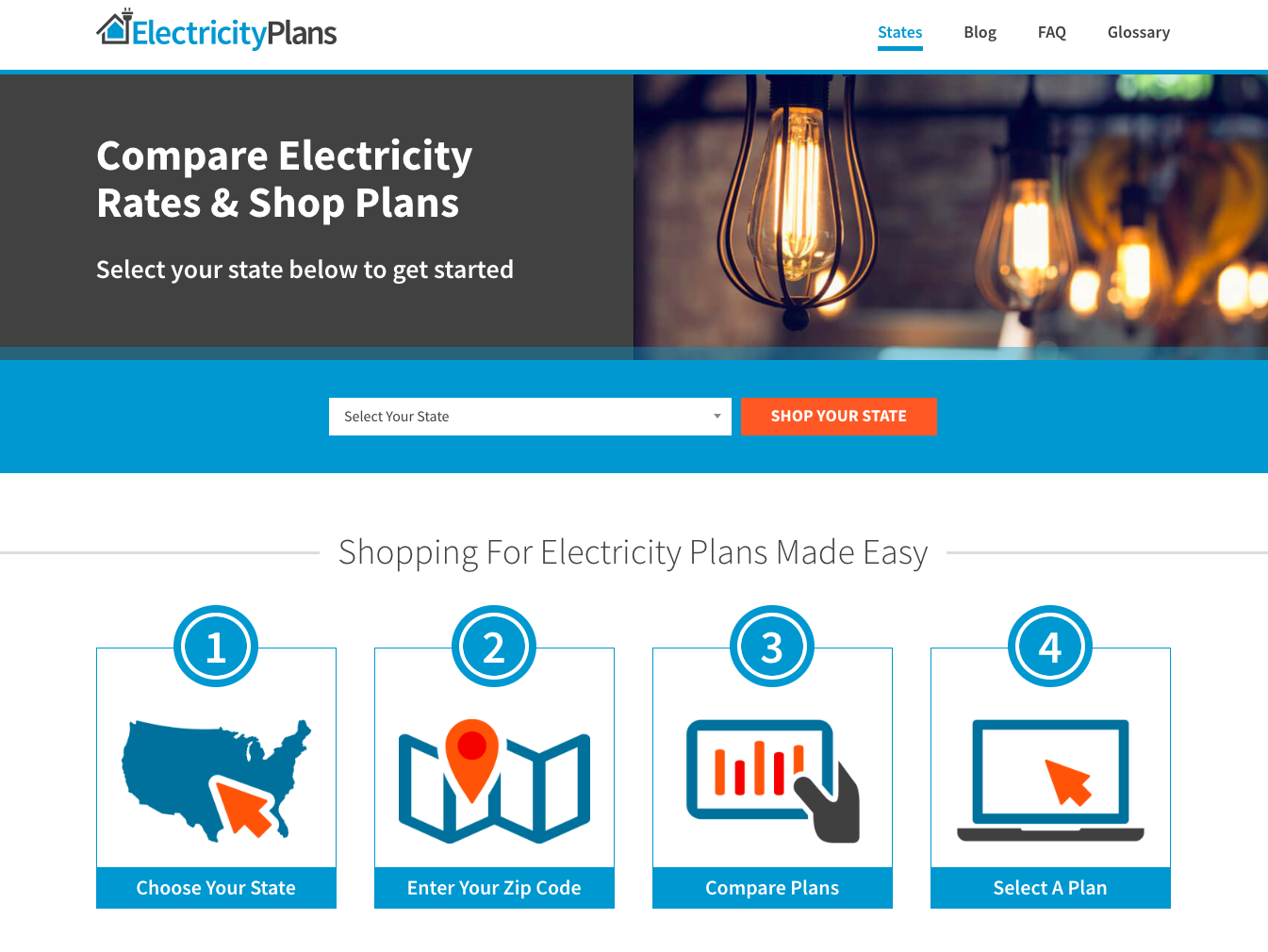
In our marketplace, we offer hundreds of different plans that all focus on the same product (electricity). Since the quality of the product being delivered is exactly the same for each plan (there’s no such thing as ‘good’ or ‘bad’ electricity since it is a commodity), our vendors have to be creative to stand out and sell well.
For a plan to stand out, price is the biggest factor since people want to pay the least amount for the electricity of course. The second most important factor is deposit amounts since people naturally want to pay the smallest (or zero) deposit. Interestingly, the third factor is if the customer gets something in return for free. An example of this is a plan that offers free electricity on nights or weekends, even if they have to pay more during a high usage period.
True Experience #2

Pierre de Braux, a content strategist at Spiralytics, a full-service performance marketing company. He helps brands build content marketing assets that drive traffic, engagements, and sales conversions.
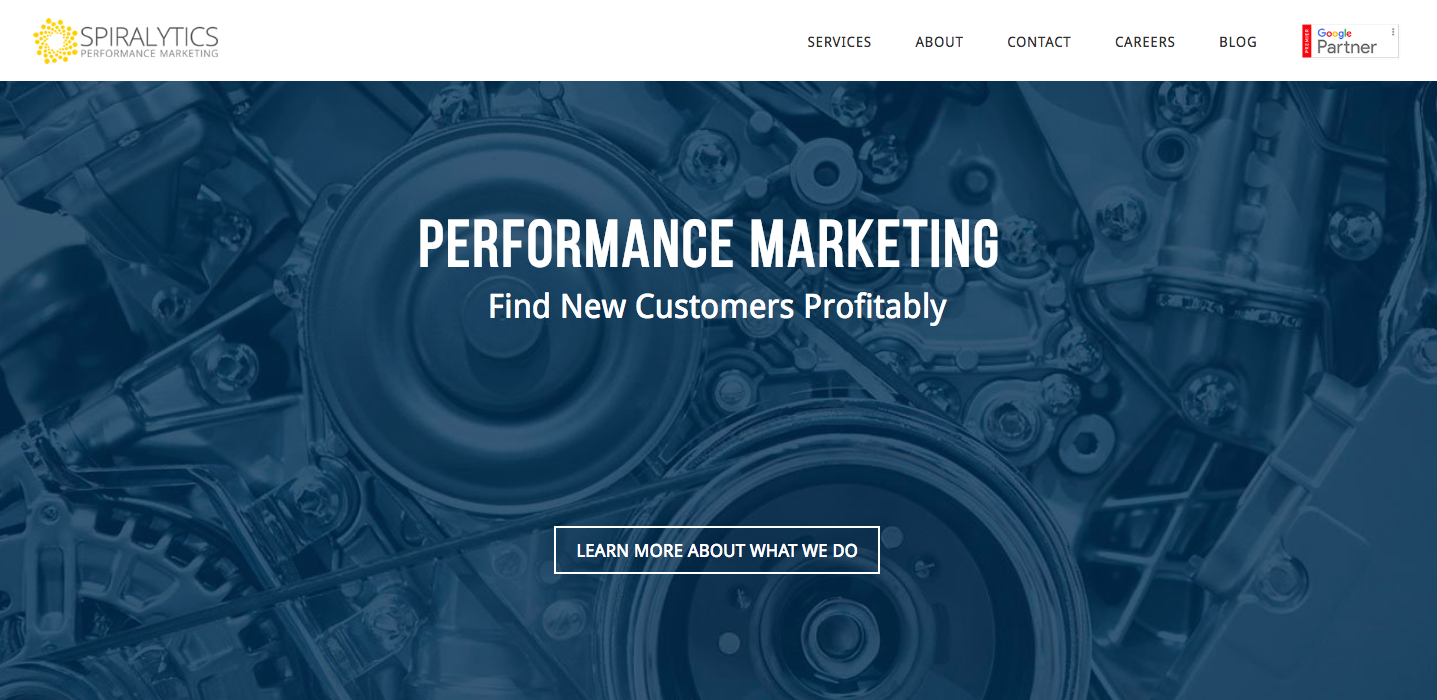
Regardless of what eCommerce platform / marketplace you’re using, there are a few things you can do to increase your exposure and drive more online sales:
1. Make sure your products are optimized for search
Retailers operating in marketplaces like Amazon and Etsy depend on internal search engines to index their products effectively (so users see them in the most relevant context). That’s why it’s important to have good keyword usage and tagging practices. Keep an eye out for software like EtsyRank and Amazon’s keyword tool to help you optimize your product listing for search.
2. Encourage customer feedback and reviews
Over 70% of users say that online reviews make them trust a business more, and trust is an incredibly important thing when you’re an eCommerce brand. When you’re selling a product that’s also being offered by other retailers, the only things that set you apart are price and “trust rating”. Positive reviews act like user-generated marketing, while negative reviews provide an opportunity for your brand to be transparent and showcase its customer management skills to the world.
3. Advertise on your marketplace
Getting your products featured/sponsored on your respective marketplace can put a relatively unknown retailer front-and-center. This greatly increases your brand’s visibility in the marketplace, which is great for stores just starting out. The best part is that it’s PPC, so you’re only paying when your ad gets clicked. If your conversion rates are high, the ad could end up paying for itself.
True Experience #3

Jeremy Brandt-Vorel, a marketing specialist with nearly a decade of experience in the Washington, D.C. startup community. He currently holds the title of Marketing Manager at Amify, where he oversees content and marketing strategy for one of Amazon’s largest brand partners.
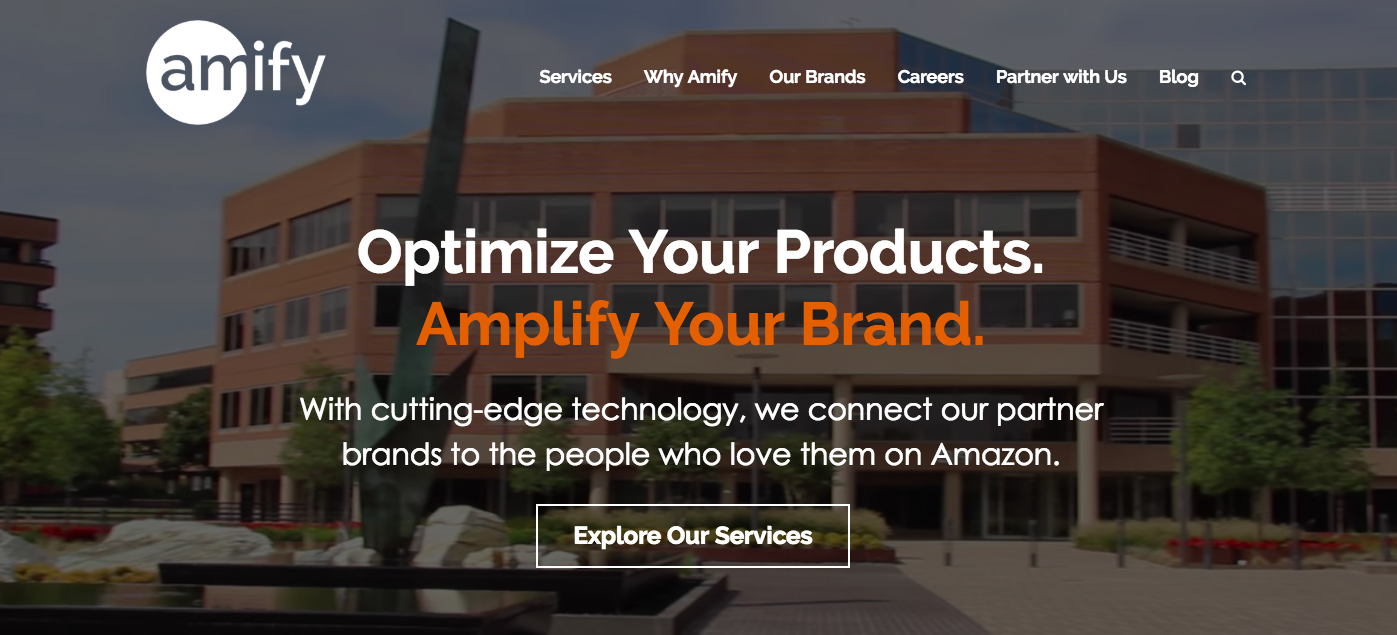
At Amify, we approach the Amazon marketplace with a four pillar approach for boosting sales:
- Management of day-to-day sales and inventory
- Protection from price violators and rogue sellers
- Enhancement of product listings and storefronts
- Acceleration of searchability via sponsored ads and keyword research
In terms of ROI, we find that aesthetic enhancements often show the best improvement in sales for our brands. Images drive 67% of online purchases, so improvements like Enhanced Brand Content, A+ Content, and Amazon Storefronts, can improve conversion rates in a short amount of time while also improving a brand’s overall look and heritage. From our experience, these aesthetic changes can boost sales by as much as 100%, depending on category.

2. Make Conversion Rate Higher
When you gain enough traffic it’s pivotal not to lose it and convert it into loyal customers. Check out our previous guide on how to solve the main problems customers face on marketplaces.
See below how you can higher your conversion rate.
2.1 Store Optimization
Every customer who lands on your eCommerce shopping mall website is looking for simple navigation and search. If they do not find it possible to figure out how the site works within seconds your bounce rate will get higher.
So make sure your Internet shopping mall platform is fast (check it with Google PageSpeed Insights), mobile friendly, easy to navigate and has ample search filters. Also to avoid unwanted consequences you should protect your store from hacker attacks with SSL certificate and make regular back-ups.
Another thing you can do is conversion rate optimization. It helps to find problem areas on your site and answer such questions as:
- what is the point where you’re losing sales
- who is dropping
- why they are dropping
- what can be done to capture these missed opportunities
For analyzing the weak points use the following Google Analytics reports:
- Funnel visualization report
- Goal flow report
- Reverse goal path report
When the analysis is done, you can develop hypotheses and test them to see which one works the best and gives you more sales.
2.2 Detailed Info
The more detailed the product description is the higher are chances the product will be purchased and not returned. A precise and detailed description that fully reflects the product is what clears up any confusion in the visitor’s mind and converts him into a real customer.
Adding a detailed instruction for your vendors on how to write a perfect product description would be really helpful. See the one from the Amazon online multi vendor marketplace platform.
And this is a good example of Amazon product description:
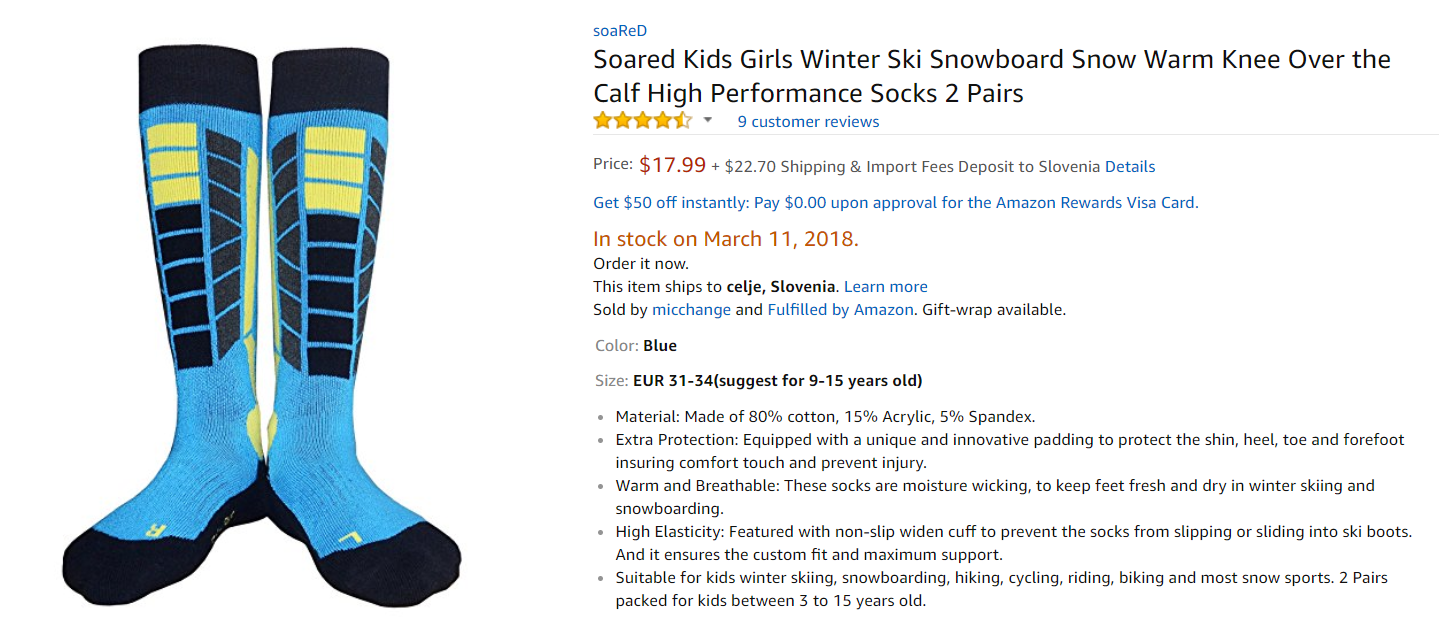
2.3 User-Generated Content
When product photos and descriptions still don’t seem convincing for a shopper, don’t let him go away and use your lethal weapon—social proof.
Product reviews from other buyers are great to give confidence and increase the conversion rate. Users’ photos in reviews are much more trusted since they are showing the product as is. The Salesforce research states that 54% of shoppers trust the information from online reviews.
And the most useful UGC is photos and videos of customers in the process of using a product of your virtual multi-store platform. Don’t miss a chance to publish them in your social nets.

2.4 Display Vendors Properly
The most important thing about vendors displaying is a rating system contributed by customer reviews. Speaking about a vendor rating, consider adding badges to the best sellers. All this will develop trust for vendors and encourage them to deliver only the best service.
Giving some more choice options and show other vendors’ alternative offerings on the product page may also work for you and help to increase sales.
2.5 Split Cart by Vendors
Splitting the cart and letting a shopper set up different options (payment and delivery, different coupon codes) for every vendor he or she bought products from may improve the customer experience and make the checkout process much easier.
In most cases, this feature will require some additional coding but if you have sufficient resources you may want to give it a try.
2.6 Auction
Bidding mechanism is the best way to wake up shoppers’ competitiveness and draw their attention. It’s quite tempting when you have an opportunity to win the product at a lower price. With the help of an auction, you can add an entertaining gamification element to your marketplace.
If you’re selling mostly unique products let your customers bid. The less common is the product the higher are the bids.
What items are sold well in the auction? Let’s see:
- obviously, collectibles (cards, stamps, comic books, coins, antique furniture, jewelry)
- toys (dolls, limited edition toy series)
- clothing
The vintage goods marketplace Rubylane has both options showing the fixed price as well as the Offer button:
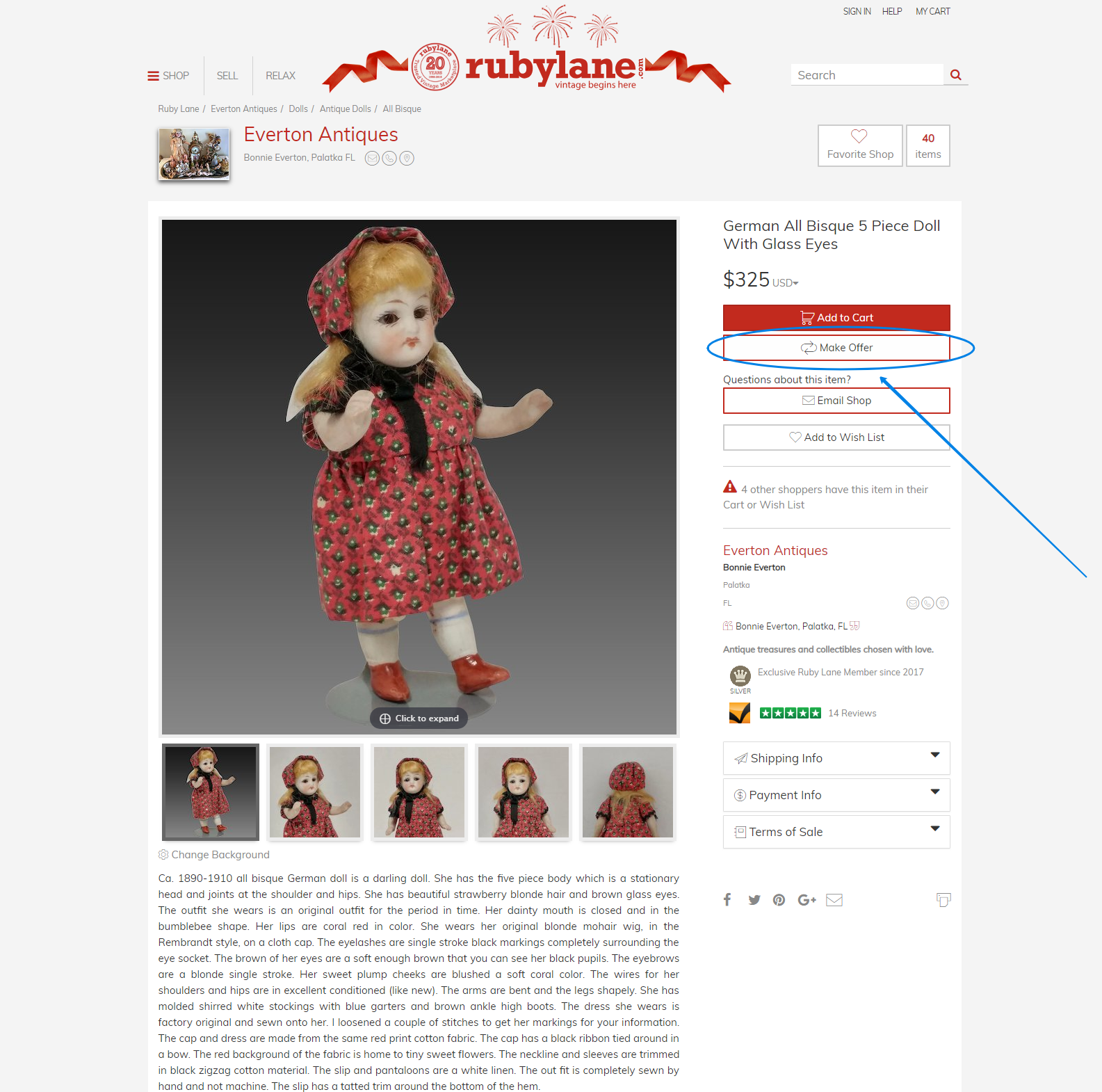
2.7 Email Marketing
We have Facebook, Twitter, and Instagram but still, email marketing is the most trustworthy and useful tool to make sales grow.
Email offers a closer and more intimate interaction comparing to social media posts and messages. And there are no algorithms that may hide your post from your customer. If you sent an email in most of the cases it will be received.
To start an email marketing you should gather an email base. A welcome pop-up, blog, a series of free webinars or downloadable guides (or all at once) will do the thing.
When it’s done, the hardest part starts. Sending regular and valuable email may be quite challenging. This is something you can try out:
- A welcome email. This welcome email of the Airbnb online multi vendor marketplace platform is friendly and helps to access the service effortlessly:
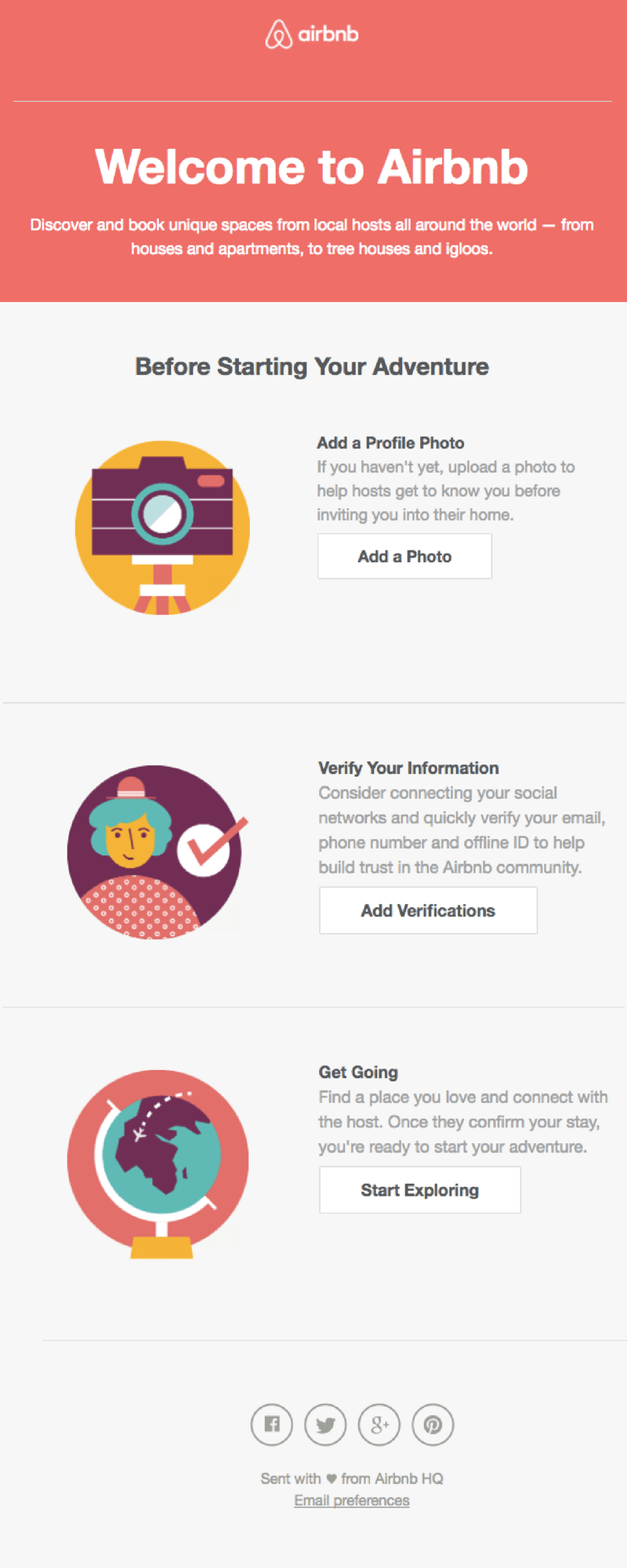
- New sales and offers
- Valuable content from your blog or social nets
- Exclusive promo codes and freebies
- A feedback about using your Internet multi vendor marketplace
- Your successful customers’ stories
Don’t forget to give a personal touch to your emails using the customer’s first name. And make your message friendly.
2.8 Bundle Products
Making product bundles will increase your order value and therefore bring more income.
How to bundle like a pro?
- Start by analyzing your Google Analytics reports to find out what product pages attract traffic the most. Think about what items from the list could be paired together.
- Or bundle main items with smaller ones (accessories, consumables).
- Upsell bundles but pay attention to the anticipated price range and if upsells are related to the main product.
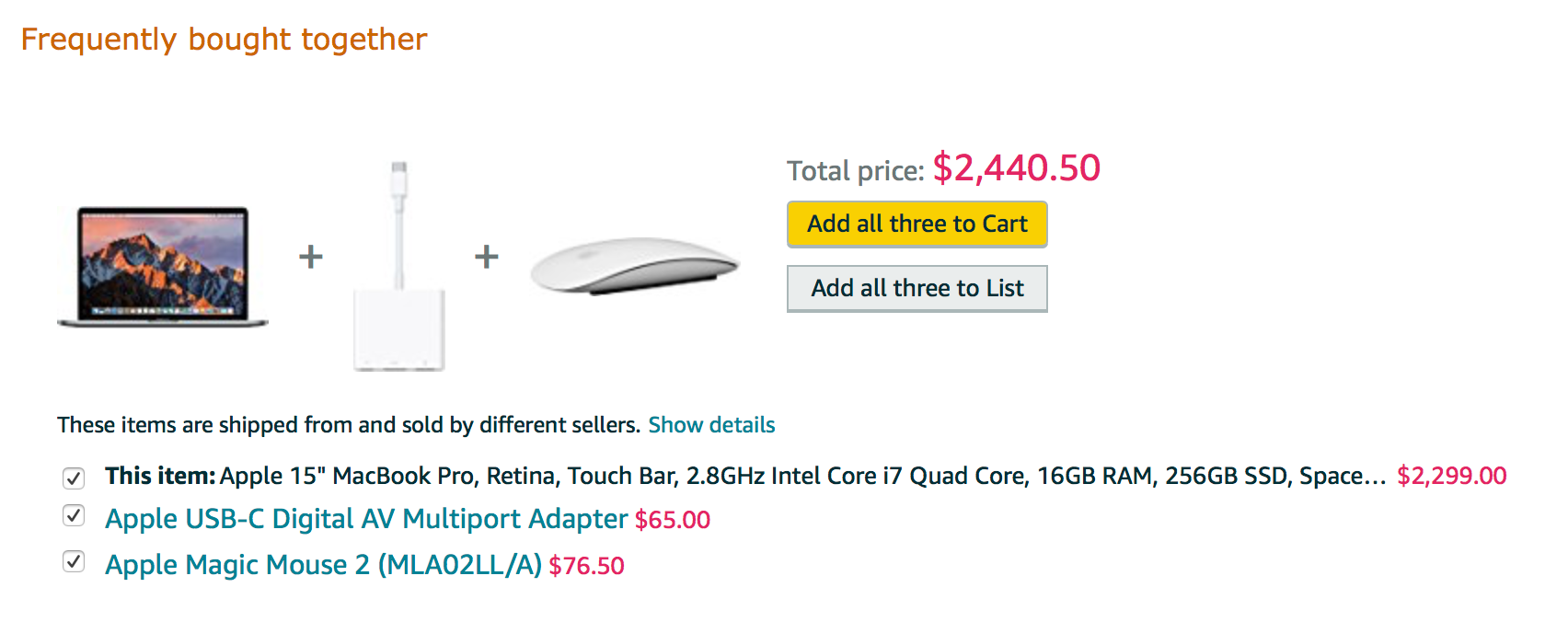
2.9 Coupon Code or a Credit
Offering a small credit or a discount coupon code to the first-timers in a welcome email, for example, is a classic trick to nudge a customer to buy from you. You may experiment with a fixed credit or a percentage discount.
Small surprise rewards also work great and make a customer happier. The point is they must be really random, avoid giving them at regular intervals.
2.10 Coupon Code or a Credit
Holidays bring smiles to buyers’ faces as well as the sellers. But it’s also about working hard to reach the maximum of customers and make them happy. Make sure you covered these points before the rush season starts:
- Upcoming deals upfront announcements
- Eye candy themed design
- Expanded payment and shipping options
- Accurate shipping estimates
- Free shipping (if possible)
- Bundles
- Share tracking info quickly

True Experience #4

Nate Masterson, the Marketing Manager for Maple Holistics
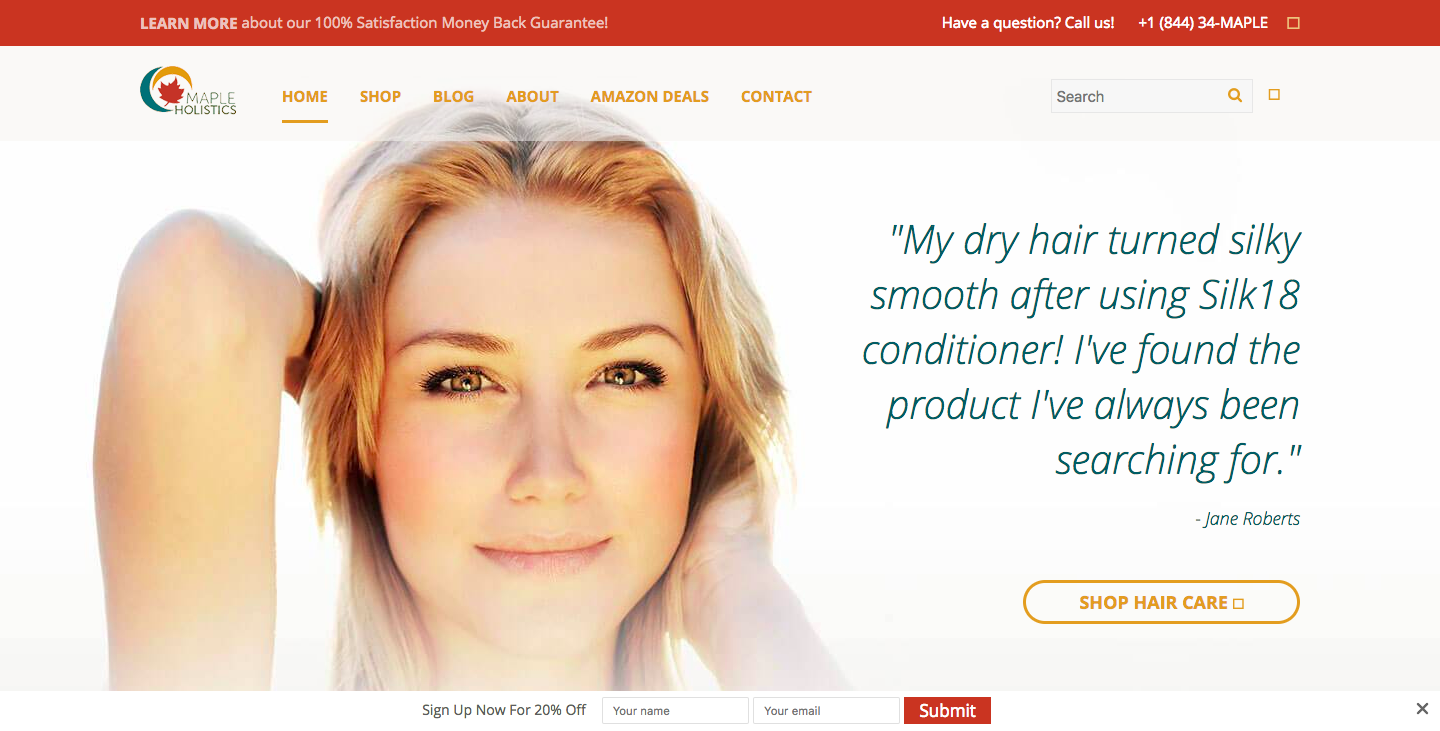
1. Improve your revenue stream with social media
Social media has revolutionized e-commerce in more ways than one, and they all culminate into a massive sale generator. For instance, social media ads are one of the most successful ways to generate new traffic to your site. If you do use these ads, make sure to test them first. Social media advertisements can be hit or miss, and you don’t want to spend a lot of money on a campaign that doesn’t work. You can also make a huge splash with an active social media presence. Everyone is on social media, and the best way to reach your customers is by staying active on all social media platforms.
2. Badges? We don’t need no stinking badges
I hate to disagree with Mel Brooks, but yes you do. If you’re operating a website that doesn’t have badges, you’re doing it wrong. If you’re not assuring buyer security, you’re going to have a tough time making sales. Of course, your website is secure, but many people may question that, ease their worry and you’ll make more sales.
3. Make checkout easy
Much of e-commerce is predicated upon impulse shopping. If you over-complicate the buying process, the customer will drop the impulse like a bad habit. Don’t let this happen to you. The simpler the checkout process is, the better off you’ll be.
True Experience #5

Emily Rowe, the owner of Social Sensei, a creative agency specializing in all things online and social media. Emily started her career in photography eleven years ago and branched out to Social Media work in 2012. She worked with over 150 businesses via Instagram and realized people wanted a more cohesive experience. She founded Social Sensei to provide that experience.
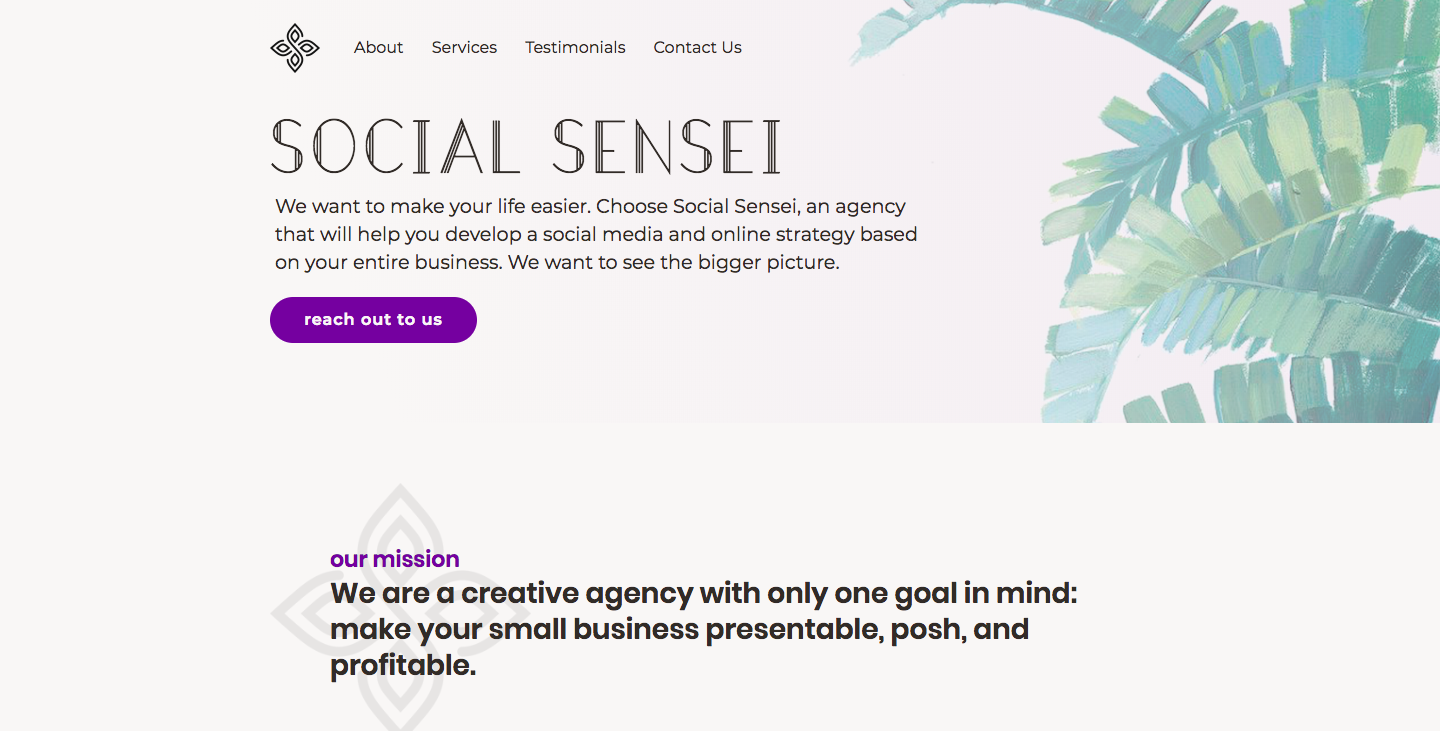
Hello there!
I am the owner of Social Sensei, a creative agency specializing in all things online and social media. We are certified Shopify partners and have over 30 years experience in photography. We have an awesome 5 member staff who make all that we do possible!
We deal primarily in Shopify build-outs but have absolutely created Etsy stores and Amazon stores for clients and often join them to their Shopify websites. No matter what Ecommerce platform a business owner chooses, the same success principles apply.
1. Really strategize your photography
We deal with a lot of small business owners who think they’ve put their finger on what’s wrong with their website. It’s really easy to say, ‘oh I bet it is SEO’ or ‘it’s definitely because we aren’t advertising.’ At the end of the day, 9 times out of 10, a strong ecommerce presence is linked to compelling photography. With the exception of Amazon, your product shots need to be creative and fun. They need to catch the eye of your audience and be something your customer looks forward to viewing. A brand that does this really well is Anthropologie. For Amazon, the photos need to be real and extremely detailed. Many, many stores you see (look up cat trees as an example) photoshop their images. Not only is it extremely noticeable, but also it cheapens the look of a brand. Instead of photoshopping your cat tree, place it in a room so your potential customer can see how big it is in relation to the couch she may be putting next to. If it’s easily identifiable as the right size, a woman is way more likely to purchase it.
2. Focus on women
That’s a perfect transitioning point to the next big mistake people make, you want your website, even if you sell beer, to be geared toward women. Let’s say you sell body soap… that’s unisex and there are lots of men and lots of women. The biggest flaw with marketing to both involves statistics proving women do 89% of all consumption in the United States and influence up to 98% of all purchases done in a household. If 89% of the audience is women, buying your soap for you AND her husband, your website and branding better woo her—not both sexes equally.
Those are really, always, my two biggest tips!
True Experience #6

Matt Warren, the CEO & Founder of Veeqo, a platform helping omnichannel retailers sell and ship everywhere. Before starting Veeqo, he was turning over £60m running his own eCommerce business selling luxury watches online.
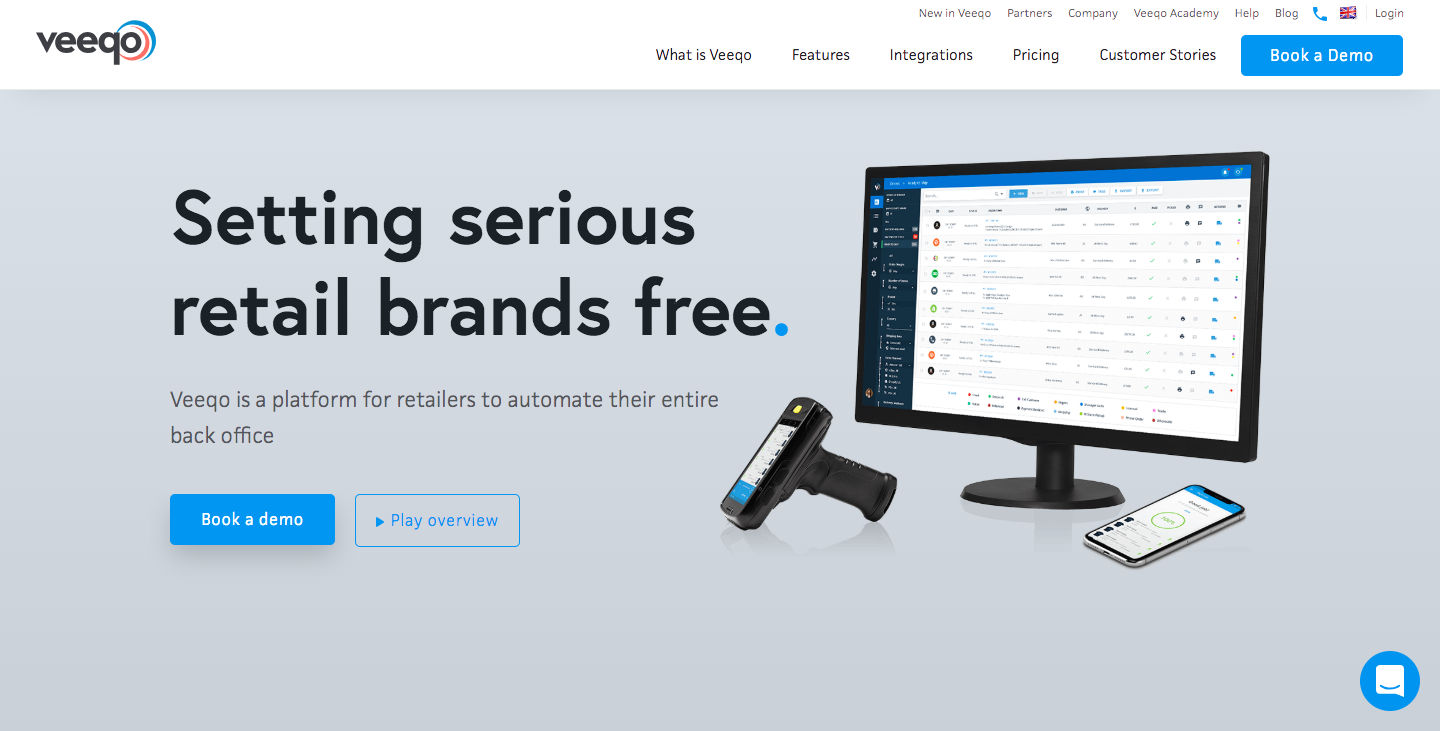
Pricingandurgencyare two huge influencers when it comes to successful marketplace selling. It’s therefore important to be dynamic in your pricing. I recommend using tools like Prisync and xSellco to track pricing and automatically stay competitive and profitable—it can be the difference between success and getting lost in the abyss of all the other sellers on a marketplace.
In terms of urgency, having a live stock figure clearly shown for each product can be huge. This can create huge urgency and nudge browsers into making that purchase decision now, especially when stock gets lower. You can even use a quality multichannel inventory management software to control how much stock shows on each channel—purposefully lowering it on a variety of marketplaces to drive greater urgency and more sales.

3. Customer Retention
As we know it’s cheaper to get existing clients to make a repeat purchase than to find new ones. But should you focus on acquisition or retention? It depends on the current state of your online multi vendor marketplace platform. If you’ve just started and don’t have too many sales then obviously acquisition is a top priority. The bigger your business gets the more attention should be paid to retention.
How to retain your customers then? See below.
3.1 Loyalty program
Giving bonuses for every purchase is one of the most effective ways to gain loyal customers and increase purchase frequency. It’s a “win-win” deal because the shopper gets more value every time he or she shops and you get repeat purchases.
You can even set rewards in points/discounts/free shipping/coupon codes or gifts not only for purchases but also for any actions in the store you find valuable.
3.2 Email Marketing (Again)
Sometimes it’s hard to convince your customers to buy again. And this may not be because they didn’t like the experience or product quality was poor. There are just tons of opportunities and may they just curious to try something else to compare.
These emails are directly aimed to bring your customer back and generate more sales:
- Abandoned cart emails. According to Baymard Institute an average cart abandonment rate equals almost 70%. Think about how much money is missed. That’s why you should try to recover it. Sometimes a simple reminder is enough to make the deal. Just make sure the cart still has products and put the “Make Payment” button right into the email.
- Wishlist emails. Both abandoned cart and wishlist reminder email are both focused on convincing buyers to take the final step in purchasing products they were interested in. Motivate shoppers of your multi vendor ecommerce mall when products they have in their wishlists are nearly out of stock, or on sale.
- Buying guides. Work perfectly during the holiday season. For some shoppers it may be hard to choose presents for their friends and family. So why not help your puzzled client to make a right choice?
- Transactional emails. Transactional emails have a much higher open rate than other types of emails. It’s a good opportunity to include some promotions or deals in them as well. Works well for order cancellation emails too.
- Automated emails about perishable products. If your business is based on consumable products, something that must be renewed over the time, set an automated mailing that will offer to have some more when the lifespan of the previous order is running out.
3.3 Community
Many big modern multi-seller shopping malls choose to establish active communities around them. Thus are Airbnb and Etsy. They are not limited to sell their products and services but also encourage their customer to interact with each other and spend time on the Internet shopping mall platform without making purchases. It’s a smart solution to build retention because when a user has a social circle within the virtual multi-store platform he or she is less likely to leave.
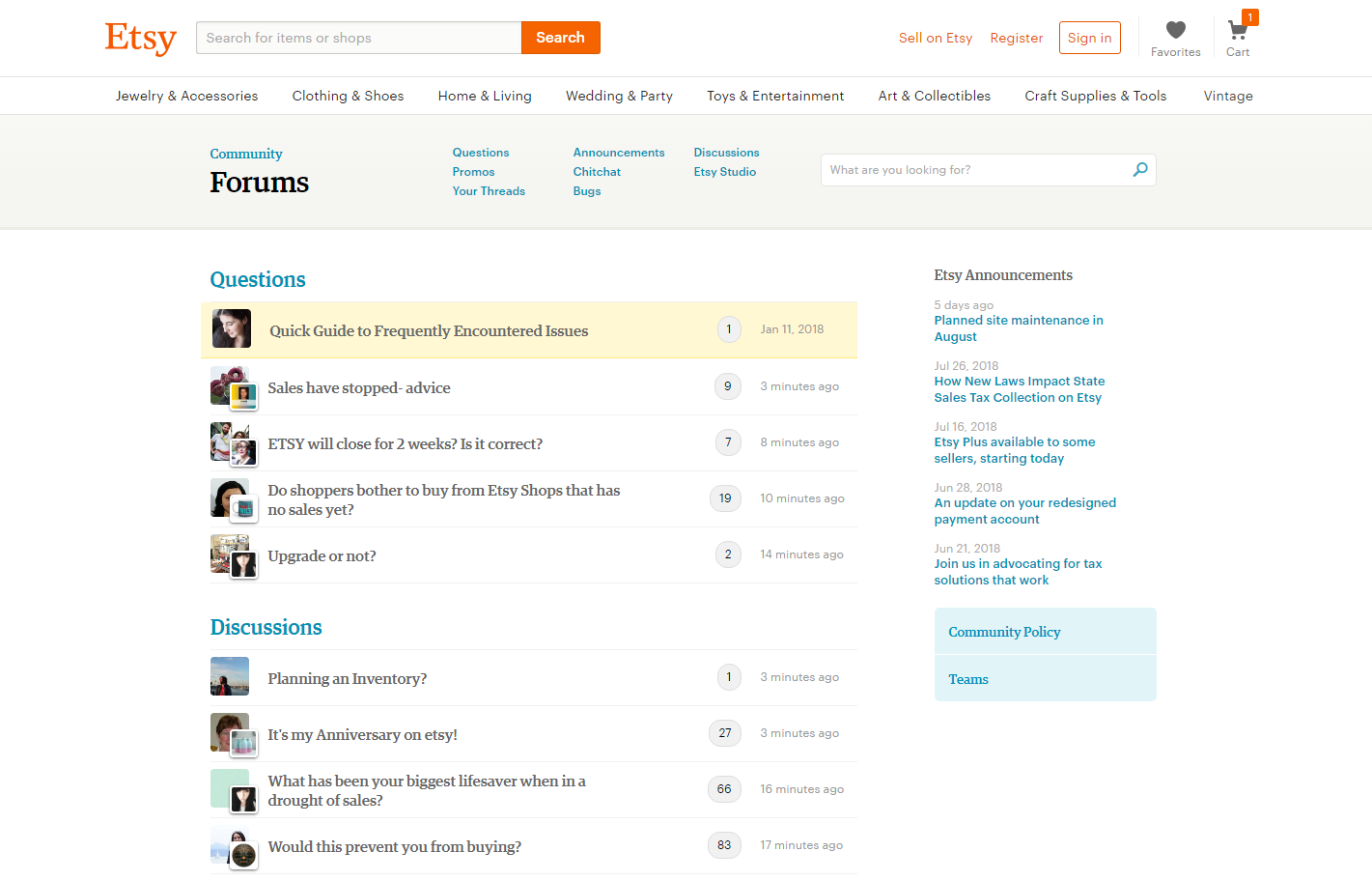
3.4 Customer Service
Top-notch service is a key instrument to make your customers return again and again. They will be confident and loyal if they know for sure that the team behind the online multi vendor marketplace platform is always there for them in case of any problems or questions. Consider using a live chat to provide instant support.
It should be remembered that disappointed clients always make more buzz than happy ones.
So just help your customers avoid problems and get the most out of your products. To make the customer care equally good from vendor to vendor set a minimum service level for them.
It’s also important to explain the customers that both Internet multi vendor marketplace and a seller are responsible for their buying experience.
True Experience #7

Andrew Maffettone, the Director of Marketing and Operations at Seller’s Choice, a full-service digital marketing agency for e-commerce sellers
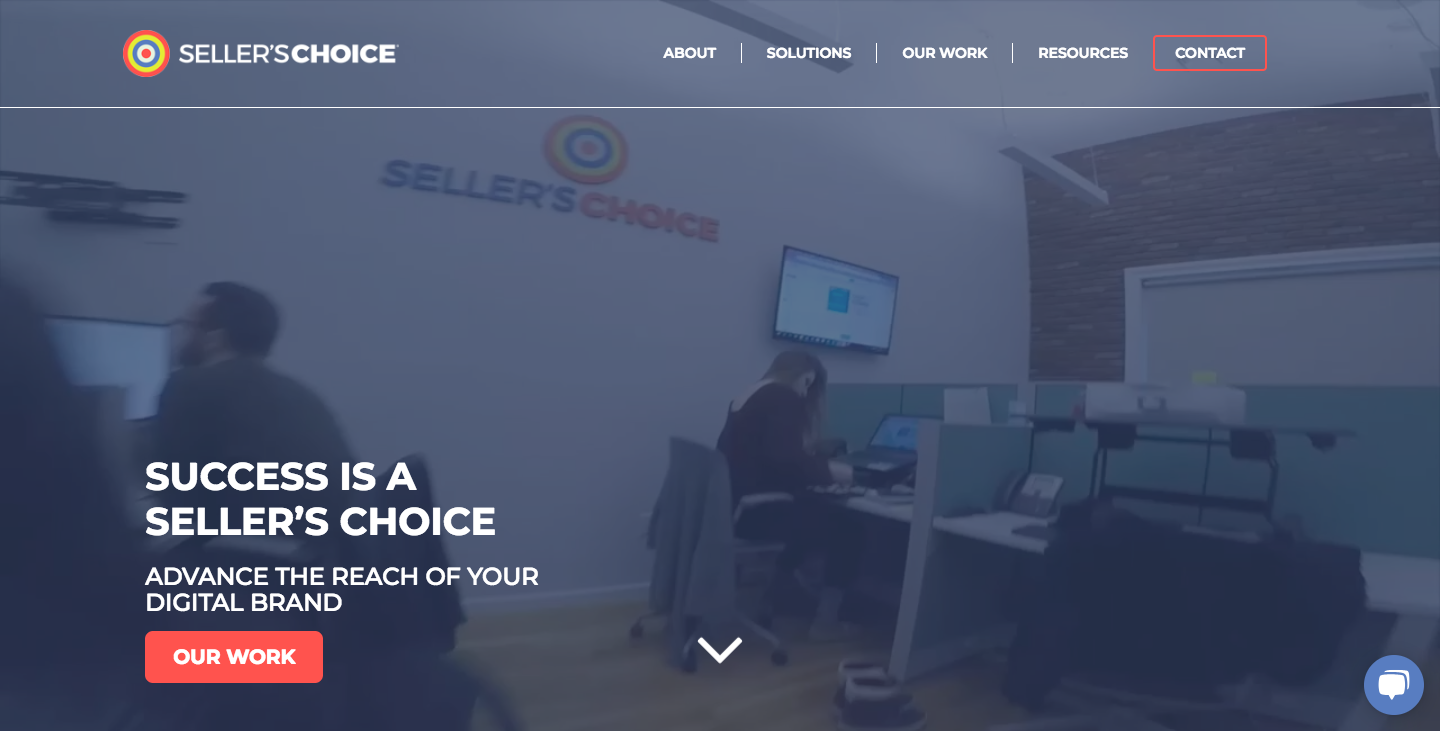
At Seller’s Choice we work with many clients who use Amazon as their primary source of revenue. With an unmatched reach, it is a must to list your item on Amazon, especially if you are a new company or product with a limited reach. Amazon reassures customers of authenticity and exposes your product to a wider range of people, but it is not enough to simply list your product on Amazon.
We’ve started to create custom Amazon storefronts for our clients as a landing page to drive traffic that may be coming from off of Amazon. These Amazon storefronts further expose customers to a company’s branding, mission, and full product line. It’s difficult to launch a new product on Amazon alone, but if you can build a community on social media and / or an email list, you can direct them to your Amazon store. All of this increases brand exposure and helps brands build their customer base and increase loyalty from previous customers.

True Experience #8

Betsy Sellars, VP of Media in IMM, is a digital marketing leader with a passion for delivering business results through a data-driven approach. Having worked both client-side and agency-side over the past 13+ years, she offers a well-rounded strategic perspective complemented by strong analytical skills. Industry experience includes Automotive, Telecom, and Entertainment, with a focus on performance marketing including e-commerce and new customer acquisition.
E-tailers need to strike a balance between direct sales on their own eCommerce sites and sales on online marketplaces such as Amazon. Key considerations include:
- Margins for direct sales vs. online marketplace sales, the marketplace takes a cut of the margin.
- The product you’re selling and the level of brand awareness consumers have about it can also impact your direct vs. online margin. If you aren’t getting enough shelf space in store, or traffic to your online site, online marketplaces might be the place for you.
- Performance (ex: Conversion rate, Cost per Conversion, ROAS) of owned ecommerce site vs. online marketplace.
- Price parity and offer parity—some brands offer dedicated / exclusive offers or products through their own site to incentivize consumers to buy direct.
The consumer path to purchase includes more channels and devices than ever, forcing a need for a seamless omnichannel approach to customer engagement and purchase. This could include strategies such as:
- Exploring a personalization solution with ability to retarget in-market shoppers with personalized offers.
- Investing in digital awareness media to connect with shoppers while in discovery.
- Implementing tracking to allow for analysis of traffic patterns between a brand’s own site and various online marketplaces.
If the strategic priority is to boost sales on an eCommerce marketplace, consider the following:
What tracking is available—without a feedback loop on sales performance, optimization opportunities are limited How you stack up to competitors in the marketplace on the following:
- Product selection
- Product pricing and offers
- Product/seller ratings and review
- Shipping and returns policy and pricing (i.e. Prime product?)
- Storefront design
- Pivot product innovation based on reviews for your brand and competitors: Product/seller ratings and reviews
- Developing a playbook so direct sales efforts and marketplace sales efforts complement each other. For instance:
- Align on rules for bidding on branded search terms
- Align on parameters for competing on Product Listing Ads
- Results: Increased YOY conversion rate by 118% during major holiday shopping time period for a consumer electronics brand by implementing some of these strategies.
Hope these tips will help to make your sales grow. But how else you could get more income from your ecommerce shopping mall website? You could try these options:
- Ads revenue
- Featured listings. Offer a fee for placing products into a listing if a vendor wants his or her products to stand out.
- Membership fee. Provide some exclusive deals and offering for premium subscribers.
- Social media or email promotions. Try to charge vendors for additional promotion via email or social nets.
- Affiliate revenue
Now you have some ideas on how to boost sales in your multi-seller shopping mall. Try to implement these ideas one by one and see what tactics worked best.
Want to add anything? Please share your thought in comments!

Yan Anderson is the Head of Content Marketing at CS-Cart with over 10 years of experience in the eCommerce industry. He's passionate about explaining complicated things in simple terms. Yan has expertise in building, running and growing eCommerce marketplaces. He loves to educate people about best practices, new technologies, and trends in the global eCommerce industry.
